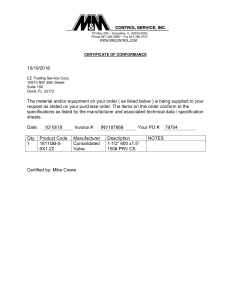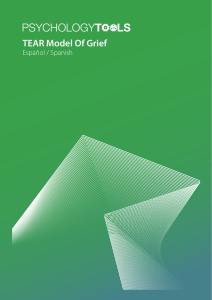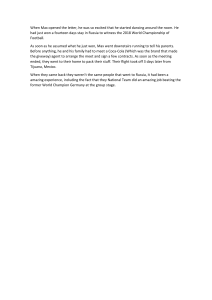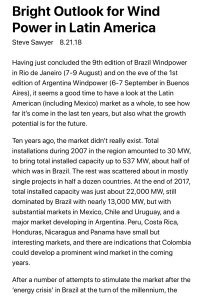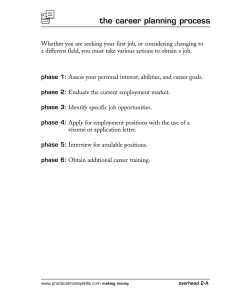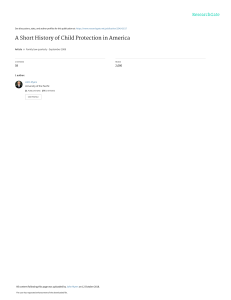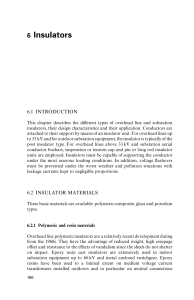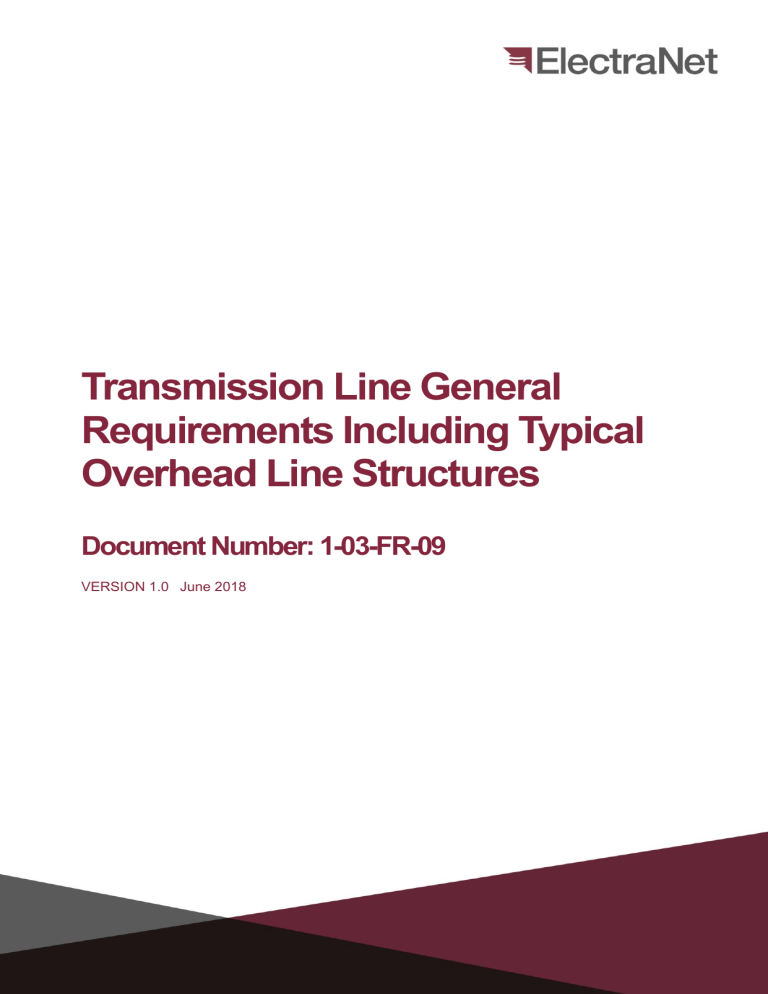
Transmission Line General Requirements Including Typical Overhead Line Structures Document Number: 1-03-FR-09 VERSION 1.0 June 2018 This functional requirements document is in line with the organisation's 1-03-ACS01 Transmission Line Conductors, 1-03-ACS-02 Transmission Line Insulators, 1-03ACS-03 Transmission Line Earthing, 1-03-ACS-04 Pole Structures and Foundations, 1-03-ACS-05 Lattice Structures and Foundations Asset Class Strategies. Intellectual property rights and disclaimer This document is published in accordance with the requirements of Chapter 5 of the National Electricity Rules (NER). It is a functional requirement document only and is not intended to contain any comprehensive or project specific designs, specifications or other information. Whilst care has been taken to ensure that the contents of this document are accurate, ElectraNet Pty Limited (ElectraNet) does not represent or warrant that the information contained in this document is complete, accurate or adequate in any respect. ElectraNet reserves the right to amend this document at any time without notice to any person. The user must carefully examine and check the information contained in this document and carry out its own independent technical and legal assessment and due diligence to ensure that the information in this document is used appropriately and that in doing so, all requirements (including requirements at law) are satisfied. For the avoidance of any doubt, the publication of this document does not limit or detract from the user’s obligations at law, and does not and will not give rise to any claim (including, without limitation, in contract, tort, equity, under statute or otherwise) against ElectraNet or any of its ‘Associates’ (as that term is defined in Corporations Act 2001 (Cth)). All intellectual property rights (including without limitation any copyright, patents, logos, designs, circuit layouts, trademarks, moral rights and know how) in the whole and every part of this document are owned by or licenced to ElectraNet. Except as expressly provided in Chapter 5 of the NER or with the prior written consent of ElectraNet, the contents of this document cannot be used, transferred, copied, modified or reproduced in whole or in part in any manner or form or in any media. © ElectraNet Pty Limited. All rights reserve Transmission Line General Requirements Including Typical Overhead Line Structures l Document No: 1-03-FR-09 Contents 1. Definitions .................................................................................................................. 4 2. Purpose ...................................................................................................................... 5 3. Introduction ............................................................................................................... 5 4. Transmission Lines Components ............................................................................ 6 4.1 4.2 4.3 4.4 Transmission Line Structures ..................................................................................... 6 Transmission Line Conductors ................................................................................... 6 Transmission Line Insulators ...................................................................................... 7 Transmission Line Earthing ......................................................................................... 7 Appendix A System Boundaries ................................................................................ 10 A1 A2 A3 General System Boundary ..........................................................................................10 Structure Insulator and Earthing System Boundary .................................................11 Structure / Foundation System Boundary .................................................................12 Appendix B Transmission Lines Functional Locations ........................................... 13 Appendix C Typical Overhead Structures ................................................................. 16 Security Classification: Public Date: June 2018 Version: 1.0 WHEN PRINTED THIS DOCUMENT IS UNCONTROLLED ©ElectraNet Pty Limited 2018 – all rights reserved Page 3 of 17 Transmission Line General Requirements Including Typical Overhead Line Structures l Document No: 1-03-FR-09 1. Definitions In this document the following words and expressions will have the following meanings: Item Meaning AAAC All Aluminium Alloy Conductor AAC All Aluminium Conductor AC Aluminium Cladding ACSR Aluminium Conductor Steel Reinforced Grazer Visual information system used by ElectraNet GZ Galvanised kV Kilo-Volt NER National Electricity Rules OPGW Optical Ground Wire (earth cable that contains optical fibres used for telecommunications) PG Parallel Groove PVC Polyvinyl Chloride SC Steel Conductor Security Classification: Public Date: June 2018 Version: 1.0 WHEN PRINTED THIS DOCUMENT IS UNCONTROLLED ©ElectraNet Pty Limited 2018 – all rights reserved Page 4 of 17 Transmission Line General Requirements Including Typical Overhead Line Structures l Document No: 1-03-FR-09 2. Purpose The purpose of this document is to provide a high level summary of the various components which make up ElectraNet’s Transmission Lines. Primary and secondary functions of transmission line components are provided for context. 3. Introduction The term Transmission Lines broadly refers to overhead transmission lines and underground cables. The key function of a transmission line is to transfer bulk power between generation sources and load centres. ElectraNet owns, manages and operates transmission lines at 275kV, 132kV and 66kV. Transmission Lines are made up of various components, namely poles, lattice structures, conductors, cables, insulators, foundations and earthing systems. These components are described in more detail in this document. EMI and Noise Limits Strain clamp Wind/ Solar Radiation Spacer Max Tension Limits Vibration damper Full tension joint Marker Ball Suspension clamp Conductor Rating Limits Minimum Clearance Requirements Figure 3-1: Typical Transmission Line Security Classification: Public Date: June 2018 Version: 1.0 WHEN PRINTED THIS DOCUMENT IS UNCONTROLLED ©ElectraNet Pty Limited 2018 – all rights reserved Page 5 of 17 Transmission Line General Requirements Including Typical Overhead Line Structures l Document No: 1-03-FR-09 4. Transmission Lines Components 4.1 Transmission Line Structures The primary functions of transmission line structures are to provide mechanical support to conductors. This is achieved by maintaining mechanical integrity without permanent structural deformation under ultimate load conditions whilst preserving structure geometry to retain operational electrical clearances under prescribed serviceability and ultimate load conditions. Secondary functions of transmission line structures are to: a) Ensure safety of people and the environment; b) Maintain structure geometry to preserve maintenance-safe approach distances for serviceability and ultimate load conditions; c) Provide an electrical path to earth for fault currents; and d) Provide a whole-of-life cost-effective service. Structure types include free-standing and guyed: a) Lattice towers / masts; b) Steel tubular poles; c) Stobie poles; and d) Concrete poles. Refer to Appendix C for a diagram of typical overhead transmission line structures. Typical foundations of transmission line structures are: 4.2 a) Bored piers; b) Mass concrete; c) Driven / cast in-situ piles; d) Soil / rock anchors; and e) Special Foundations (e.g. raft foundations). Transmission Line Conductors The primary function of transmission line conductor systems is to transfer electrical power between designated locations, within prescribed performance, operating and environmental conditions. Secondary functions of transmission line conductors are to: a) Maintain electrical safety and minimise adverse environment; and b) Provide a whole-of-life cost-effective service. Security Classification: Public Date: June 2018 Version: 1.0 effects on the WHEN PRINTED THIS DOCUMENT IS UNCONTROLLED ©ElectraNet Pty Limited 2018 – all rights reserved Page 6 of 17 Transmission Line General Requirements Including Typical Overhead Line Structures l Document No: 1-03-FR-09 4.3 Transmission Line Insulators Transmission line insulation has two primary functions: a) To insulate energised components from earthed structures at rated operating voltages and specified switching and lightning impulses; and b) To support the conductor system up to ultimate mechanical load limits and transfer the mechanical loads to structure. Transmission line hardware has four primary functions: 4.4 a) To support the Insulator system up to electrical load limits; b) To support the Insulator system up to ultimate mechanical load limits; c) To provide effective attachment interface between Conductor and Insulators to securely transfer loads to the structure; and d) To provide a whole-of-life cost effective service. Transmission Line Earthing The primary functional requirement of a transmission line earthing system is to: a) Provide an electrical path for lightning and fault currents to earth, to ensure safety of people, assets and the environment; b) Ensure that faults are cleared within the NER time limits, transmission line components are not damaged, and the network performance (due to lightning) is within agreed NER limits; and c) Provide an earth (i.e. zero) potential reference to ground under normal circuit conditions for the dissipation of leakage currents. Secondary functional requirements of a transmission earthing system for its design life are to: a) Maintain electrical safety and minimise adverse environment; b) Provide an effective technical solution; and c) Provide a whole-of-life cost-effective service. effects on the Transmission Line Earthing relates to: a) Aerial earthing – this sub-system includes shield-wire and OPGW and its various supporting hardware and fittings (strain assembly, suspension assembly, spark-gap insulators, vibration dampers, joints and marker balls); b) Ground level earthing – this sub-system includes buried earth stakes, earth bounds PVC cable, copper strap), cable lugs, fasteners and clamps. This earthing sub-system forms a dedicated electrical connection between the structure and the soil surrounding it. This is in addition to the electrical connection provided by the embedded structure / foundation and soil; and Security Classification: Public Date: June 2018 Version: 1.0 WHEN PRINTED THIS DOCUMENT IS UNCONTROLLED ©ElectraNet Pty Limited 2018 – all rights reserved Page 7 of 17 Transmission Line General Requirements Including Typical Overhead Line Structures l Document No: 1-03-FR-09 c) 4.5 Communication hardware – this sub-system includes the interface fibre hardware for OPGW assets. This includes fibre splice boxes, fibre termination boxes, etc. Transmission High Voltage Cables The primary functions of transmission high voltage cables is to transfer electrical power between designated locations, within prescribed performance, operating and environmental conditions and to insulate energised components from earthed structures at rated operating voltages and specified switching and lightning impulses. Secondary functions of transmission high voltage cables are to: a) Maintain electrical safety and minimise adverse environment; b) Provide electrical insulation; and c) Provide a whole-of-life cost-effective service. effects on the The high voltage cable components are: a) Cable and accessories including joints, sealing ends, link boxes, partial discharge detection equipment; b) Condition Monitoring System / Distributed Temperature Sensor; and c) Cable trench, joint bays, link box equipment pits, support structures, expansion chambers. Security Classification: Public Date: June 2018 Version: 1.0 WHEN PRINTED THIS DOCUMENT IS UNCONTROLLED ©ElectraNet Pty Limited 2018 – all rights reserved Page 8 of 17 Transmission Line General Requirements Including Typical Overhead Line Structures l Document No: 1-03-FR-09 Appendices Security Classification: Public Date: June 2018 Version: 1.0 WHEN PRINTED THIS DOCUMENT IS UNCONTROLLED ©ElectraNet Pty Limited 2018 – all rights reserved Page 9 of 17 Transmission Line General Requirements Including Typical Overhead Line Structures l Document No: 1-03-FR-09 Appendix A A1 System Boundaries General System Boundary The system boundary is depicted in Figure A-1. Figure A-1: Transmission Lines Functional Systems Security Classification: Public Date: June 2018 Version: 1.0 WHEN PRINTED THIS DOCUMENT IS UNCONTROLLED ©ElectraNet Pty Limited 2018 – all rights reserved Page 10 of 17 Transmission Line General Requirements Including Typical Overhead Line Structures l Document No: 1-03-FR-09 A2 Structure Insulator and Earthing System Boundary The structure and insulator systems boundary is defined as the attachment bracket / plate intrinsically connected to the structure (i.e. welded or bolted connection). See Figure A-2. Figure A-2: Structure system boundaries with Insulator Systems Figure A-3: Structure system boundaries with Aerial Earthing Systems The structure and aerial earthing systems boundary is defined as the attachment bracket / plate intrinsically connected to the structure (i.e. welded or bolted connection) shown in Figure A-3. The structure / earthing system boundary at ground level is the connecting bolt fastening the earth bond lead to the structure. Security Classification: Public Date: June 2018 Version: 1.0 WHEN PRINTED THIS DOCUMENT IS UNCONTROLLED ©ElectraNet Pty Limited 2018 – all rights reserved Page 11 of 17 Transmission Line General Requirements Including Typical Overhead Line Structures l Document No: 1-03-FR-09 A3 Structure / Foundation System Boundary The structure and foundation system boundaries are: a) Free-standing lattice tower: stub connection; b) Guyed Mast: base-plate and guy assembly attachment to connecting eye of the buried anchor tie rod; c) Pole with base-plate and anchor-bolt connection: base-plate; and d) Embedded pole: pole member contained within footing. Transmission line support structure sub-elements comprise of: a) Structural members – includes primary members such as lattice tower/mast leg and bracing sections, steel tube pole section, Stobie pole composite material sections (steel / concrete) or reinforced concrete pole sections; b) Fasteners – includes plates, bolts, nuts and washers; c) Stay arrangements – includes stay wires and associated fittings; and d) Auxiliary members – includes anti climbing device, fall arrest system, climbing aids and structure ID and danger warning plate signage. The foundation system is comprised of two sub-elements: a) Structural footing sub-element that transfer load actions to the geotechnical foundation sub-element. Components comprise reinforced concrete footings, steel / concrete or other pile types, rock / soil anchors, and include structure / footing interface components (lattice tower stubs, anchor bolts and related plates, nuts and washers); and b) Geotechnical foundation sub-element consists of the soil/rock medium (including engineered backfill) that interact with the “structure footing” to resist load actions. Security Classification: Public Date: June 2018 Version: 1.0 WHEN PRINTED THIS DOCUMENT IS UNCONTROLLED ©ElectraNet Pty Limited 2018 – all rights reserved Page 12 of 17 Transmission Line General Requirements Including Typical Overhead Line Structures l Document No: 1-03-FR-09 Appendix B Transmission Lines Functional Locations Table B-1: Conductor System Location All ElectraNet owned transmission feeders Asset Transmission lines Conductors: 1. Aluminium Conductor Steel Reinforced (ACSR) these could be Aluminium Cladding (AC) or Galvanised (GZ); 2. All Aluminium Alloy Conductor (AAAC); and 3. All Aluminium Conductor (AAC). Transmission lines Conductor Hardware and Attachments: 4. Armour Rods and repair Helical fittings; 5. Vibration dampers; 6. Spacers; 7. Aerial markers; 8. Conductor mid span joints; and 9. Suspension Clamps. Full tension Conductor Attachments: 10. Bolted; 11. Bolted Dead End; and 12. Compression Dead End. Non-Tension Conductor Attachments: 13. Bolted palm Connections; 14. Terminal Lugs; and 15. PG Clamps. Exclusion Security Classification: Public Date: June 2018 Version: 1.0 1. 2. 3. Overhead earth wire / OPGW and attachment fittings; Insulators and insulator fittings; or Hardware. WHEN PRINTED THIS DOCUMENT IS UNCONTROLLED ©ElectraNet Pty Limited 2018 – all rights reserved Page 13 of 17 Transmission Line General Requirements Including Typical Overhead Line Structures l Document No: 1-03-FR-09 Table B-2: Insulation System Location All ElectraNet owned transmission feeders Transmission lines Insulators by function and attachment type: 1. Suspension; 2. Strain / Terminal; and 3. Post. Transmission lines Insulators by materials and make: 4. Porcelain disc Insulators; 5. Glass disc insulators; 6. Porcelain Long Rod and Post insulators; and 7. Non Ceramic Long Rod and Post insulators including Akimbo Cross arms. Hardware / Attachment for Insulators: 8. Hooks; 9. Shackles; 10. Sag links; 11. Clevis / socket clevis; and 12. Sockets / tongues / socket tongues. Exclusion Conductors and attachments on them. Table B-3: Earth System Item Requirement Component Bare conductor for shield-wire applications (ACSR / GZ, SC / GZ, or OPGW). Full tension shield-wire / OPGW attachment components. Non-tension shield-wire / OPGW attachment components. Conductor hardware Earth connections. Earthing components. Embedded foundation. Exclusion Communication hardware. Security Classification: Public Date: June 2018 Version: 1.0 WHEN PRINTED THIS DOCUMENT IS UNCONTROLLED ©ElectraNet Pty Limited 2018 – all rights reserved Page 14 of 17 Transmission Line General Requirements Including Typical Overhead Line Structures l Document No: 1-03-FR-09 Table B-4: Structure Location Classifications for Earthing Item Requirement Environment Area A Structures located in built up areas or any locations where the public, including unsupervised children, may be present. This includes structures in the following locations: 1. Land allocated for educational use; 2. Land allocated for recreational use; 3. In a public thoroughfare (declared road, walkway, track) within 100 metres of any of the above-named locations; 4. Public lands within a city or town e.g. road reserves, green belts or other easy access areas; 5. Within private property where a residence or recreational area is within 100 metres of the structure; 6. Where there is evidence of persons frequenting the area or evidence that a structure is being, or has been climbed by unauthorised persons; 7. Torrens Island except for structures located in substations or switchyards; 8. Northern Power Station and the surrounding areas north and east of the power station where there is easy access by the public; and 9. The Environment Area for each structure is shown in the Line Schedules which are accessed via Grazer. Environment Area B Structures which are located within 5 kilometres of a town and within 100 metres of a road, public thoroughfare (declared road, walkway, track) or private access track to a private residence. The Environment Area for each structure is shown in the Line Schedules which are accessed via Grazer. Environment Area C Transmission line structures located inside substations or switchyards or in areas not defined in Areas A and B above. The Environment Area for each structure is shown in the Line Schedules which are accessed via Grazer. Security Classification: Public Date: June 2018 Version: 1.0 WHEN PRINTED THIS DOCUMENT IS UNCONTROLLED ©ElectraNet Pty Limited 2018 – all rights reserved Page 15 of 17 Transmission Line General Requirements Including Typical Overhead Line Structures l Document No: 1-03-FR-09 Appendix C Typical Overhead Structures Figure C-1 illustrates the typical structures used in overhead line design. Structures must be designed in accordance with AS / NZS 7000. Figure C-1: Typical Overhead Line Structures Security Classification: Public Date: June 2018 Version: 1.0 WHEN PRINTED THIS DOCUMENT IS UNCONTROLLED ©ElectraNet Pty Limited 2018 – all rights reserved Page 16 of 17
